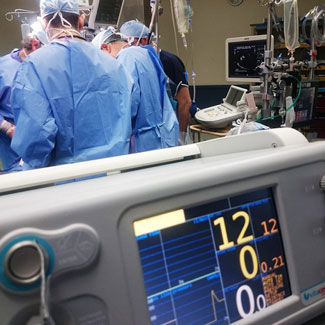Featured Articles

Acute Compartment Syndrome of the Extremities
October 21, 2020
In a retrospective study of 1,184 patients investigating the use of continuous intra-compartmental pressure monitoring for the diagnosis of acute compartment syndrome reported an estimated sensitivity of 94%, specificity of 98%, and a negative predictive value of 99%, using the intraoperative clinical findings as the gold standard. Abstract Acute compartment syndrome most often develops soon

Delayed Onset of Acute Limb Compartment Syndrome with Neuropathy After Nonarterial Extracorporeal Membrane Oxygenation Therapy
October 7, 2020
Delayed diagnosis and treatment can lead to permanent dysfunction in the limb involved. For early diagnosis, ICP monitoring is one of the most important objective findings. In this case, the medical staff did not recognize the risk of ALCS and ICP was not monitored; therefore, the diagnosis of ALCS was delayed resulting in permanent damage

The Pathophysiology, Diagnosis and Current Management of Acute Compartment Syndrome
September 21, 2020
Many authors advocate the use of intra-compartmental pressure monitoring in all at risk patients and those where extra clinical vigilance is advised. It has also been suggested that pressure monitoring may detect acute compartment syndrome prior to the onset of clinical signs, in addition to reducing the time to fasciotomy and the development of subsequent

A Case Report of Acute Exertional Compartment Syndrome with Peroneal Nerve Palsy in an Adolescent Athlete
September 18, 2020
Compartment syndrome is a dangerous and potentially disastrous condition for a patient, which if not treated in a timely fashion can have devastating consequences. If there is high clinical suspicion of compartment syndrome intra-compartmental pressure should be measured immediately using a STIC intra-compartmental pressure monitor to confirm the proper diagnosis and assist in data-driven decisions.

Acute Exertional Compartment Syndrome with Rhabdomyloysis: Case Report and Review of Literature
August 31, 2020
The ability for a clinician to promptly diagnose and initiate proper treatment for acute exertional compartment syndrome (AECS) is crucial for the prevention of severe or devastating consequences for the patient. Abstract Acute exertional compartment syndrome (AECS) is characterized by a rise in pressure within a closed fascial space in the absence of a specific

Does your headache treatment plan include targeted thermal therapy? | Whitepaper
June 8, 2020
Evidence for thermal therapy application as primary or adjunctive headache relief. Physicians have many treatments available for the headache sufferer. Most treatment plans include medication and/or lifestyle modifications, but for multiple reasons, many patients need or desire a safe, self-administered, simple, drug-free alternative for their headache relief.

Evaluating Effective Non-Narcotic Alternatives in Post-Operative Pain Relief Therapy
March 8, 2020
Opioid misuse and addiction – including prescription pain relievers, heroin, and synthetic opioids such as fentanyl – present a serious national crisis that affects our healthcare system, public health, and social and economic welfare. In the United States alone, 136 people die every day from an opioid overdose according to CDC estimates. Beyond the human

How Opioid Addiction Occurs
January 16, 2020
Opioid use — even short term — can lead to addiction and, too often, overdose. Find out how short-term pain relief leads to life-threatening problems. Authored by Mayo Clinical Staff Anyone who takes opioids is at risk of developing addiction. Your personal history and the length of time you use opioids play a role, but